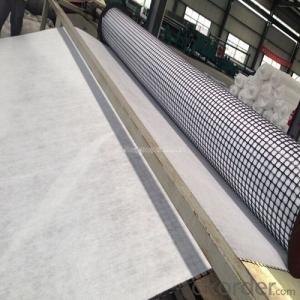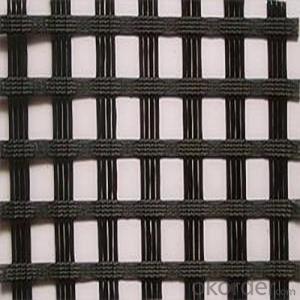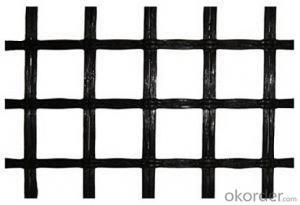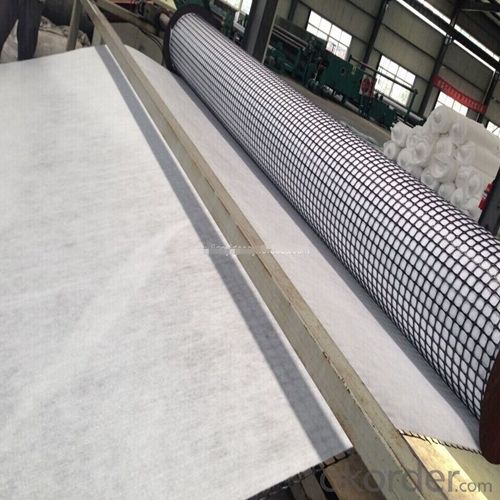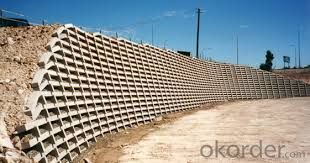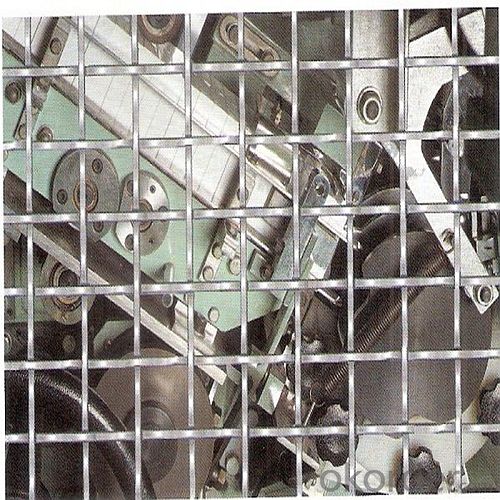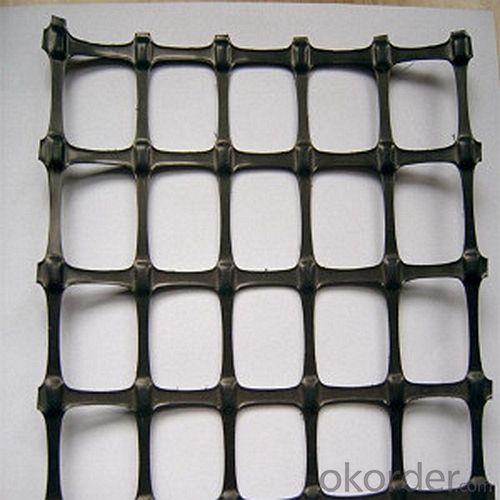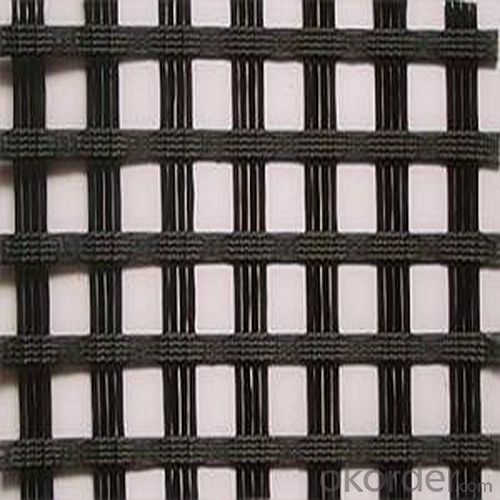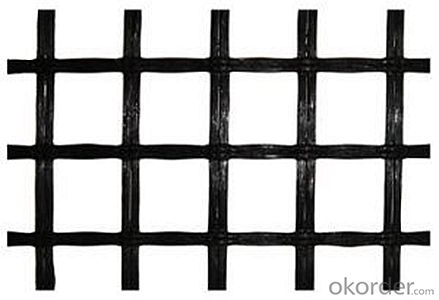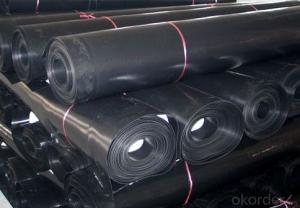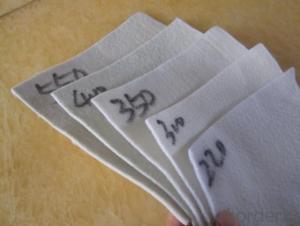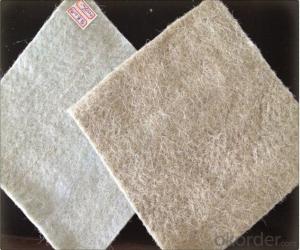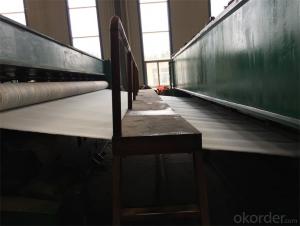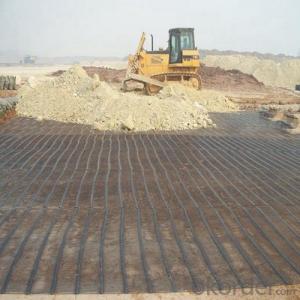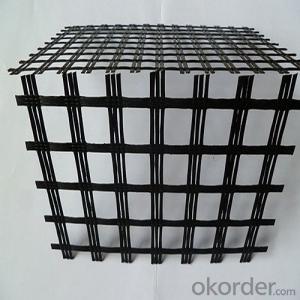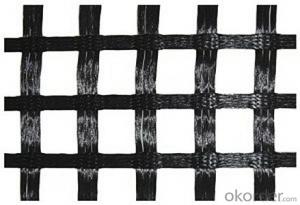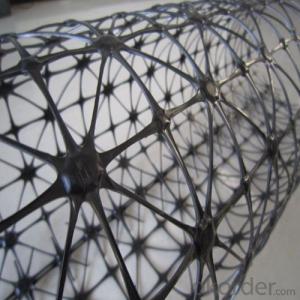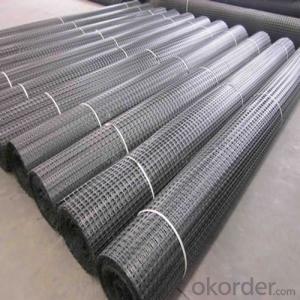Terratex Geotextile Grass Protection Geogrids with Low Elongation and Good Toughness
- Loading Port:
- China main port
- Payment Terms:
- TT OR LC
- Min Order Qty:
- 1000 m²
- Supply Capability:
- 1000000 m²/month
OKorder Service Pledge
OKorder Financial Service
You Might Also Like
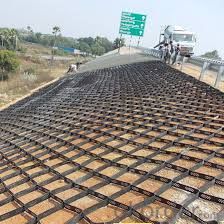
Introduction
Material:
Polyester
Color:
White Black Gray Etc
Tensile strength:
25Kn/m--300Kn/m
Length:
50-100m
Certification:
CE /ISO9001
Coating:
PVC
Production function
1.It can be applied in all kinds of roads,airports to enhance the roadbed;
2.It can be applied in a large car park and terminal freight yard,etc. to strengthen the foundations of a permanent load;
3.It can be applied in rail, road slope's protection;
4.It can be applied to enhance the culvert;
5.It can be applied as a secondary enhancement after the uniaxial Geogrid soil enhancement, further enhance the soil;
6.It can be applied in mining, tunnel reinforcement.
7.Network used for animal and husbandry;
8.Network used for cage fishing.
Our Service
Quality assurance
1.On a regular basis or as per your request,we entrust national testing agencies to conduct quality inspections
2. Strictly in accordance with the ISO9001-2008 international quality system standard,we monitor and manage the whole process throughout production,quality testing,and measurement to ensure product quality
3. For quality-related construction delay or substandard construction(except for damage or losses due to customer’s responsibility or irresistible natural disasters),we have refunding,replacement,and repair services.We will respond to customers’ feedbacks on quality issues within 24 hours.
Packaging & Shipping
Packing: PLASTIC FILM INSIDE, AND WOVEN BAG OUTSIDE
Shipping: About 15 days after receipt the deposit
FAQ:
Q: What kind of payments does jenor support?
A: T/T, L/C, Cash are accepted.
Q: Do you charge for the samples?
A: Accordeing to our company policy, the samples are free, we only charge the freight fee. And we will return the freight fee during the next order.
Q: Can you produce according to customers' design?
A: Sure, we are professional manufacturer, OEM and ODM are both welcome.
Q: Do you have other products?
A: Yes, please check the pictures:
- Q: What are the different types of geotextile seams?
- There are several different types of geotextile seams, including overlap seams, butt seams, and sewn seams.
- Q: Can geotextiles be used in geosynthetic clay liners?
- Yes, geotextiles can be used in geosynthetic clay liners. Geotextiles are often used as a separation layer between the clay liner and the adjacent soil or as a protective barrier to prevent punctures or damage to the clay liner.
- Q: Can geotextiles be used in geotechnical engineering projects?
- Yes, geotextiles can be used in geotechnical engineering projects. Geotextiles are permeable fabrics that are commonly used to enhance the performance and stability of soil in various geotechnical applications, such as erosion control, soil stabilization, drainage systems, and reinforcement of weak soils. They can improve the overall strength and durability of the soil, prevent erosion, and provide filtration and drainage capabilities.
- Q: Designers give blind ditch length of 540m, geotextile for 2835m2 more
- Lovel new materials geotextile raw materials: geotextile raw materials used not only to consider its use in the environment required physical and chemical properties, but also pay attention to product costs.
- Q: How do geotextiles help in vegetation establishment?
- Geotextiles help in vegetation establishment by providing a stable and fertile environment for plants to grow. They prevent soil erosion, retain moisture, and enhance nutrient availability, ultimately promoting root growth and protecting young plants from harsh weather conditions.
- Q: What are the advantages of using geotextiles?
- Geotextiles offer several advantages in various applications. Firstly, they enhance soil stability by providing reinforcement and preventing erosion. They also aid in filtration by allowing water to pass through while retaining fine particles, thus improving water quality. Geotextiles can also be used in drainage systems to facilitate the flow of water and prevent clogging. Additionally, they help in separation, preventing the mixing of different types of soils or materials. Geotextiles are durable and resistant to degradation, making them a cost-effective solution with a long lifespan. Overall, geotextiles provide numerous benefits in infrastructure projects, environmental protection, and soil management.
- Q: Can geotextiles be used in river training works?
- Yes, geotextiles can be used in river training works. They are often used to reinforce riverbanks, control soil erosion, and stabilize the riverbed. Geotextiles can help manage water flow, prevent sedimentation, and improve overall river stability.
- Q: Can geotextiles be used for shoreline protection?
- Yes, geotextiles can be used for shoreline protection. They are commonly used to stabilize coastal areas and prevent erosion by acting as a barrier against wave action and water currents. Geotextiles help to retain sediment and provide structural support, making them an effective solution for shoreline protection projects.
- Q: Can geotextiles be used in shoreline stabilization projects?
- Yes, geotextiles can be used in shoreline stabilization projects. Geotextiles are frequently utilized in coastal engineering and shoreline protection projects to prevent erosion and stabilize the shoreline. They act as a barrier between the soil and water, reducing the impact of waves and currents, while still allowing for water drainage. Geotextiles are effective in preventing surface erosion and promoting vegetation growth, making them a valuable tool in shoreline stabilization efforts.
- Q: Can geotextiles be used for reinforcement of underground tunnels?
- Yes, geotextiles can be used for reinforcement of underground tunnels. Geotextiles are permeable fabrics that can provide soil stabilization, erosion control, and reinforcement. When used in the construction of tunnels, geotextiles can help to strengthen the surrounding soil, prevent soil erosion, and enhance the overall stability and durability of the tunnel structure.
Send your message to us
Terratex Geotextile Grass Protection Geogrids with Low Elongation and Good Toughness
- Loading Port:
- China main port
- Payment Terms:
- TT OR LC
- Min Order Qty:
- 1000 m²
- Supply Capability:
- 1000000 m²/month
OKorder Service Pledge
OKorder Financial Service
Similar products
Hot products
Hot Searches
Related keywords
